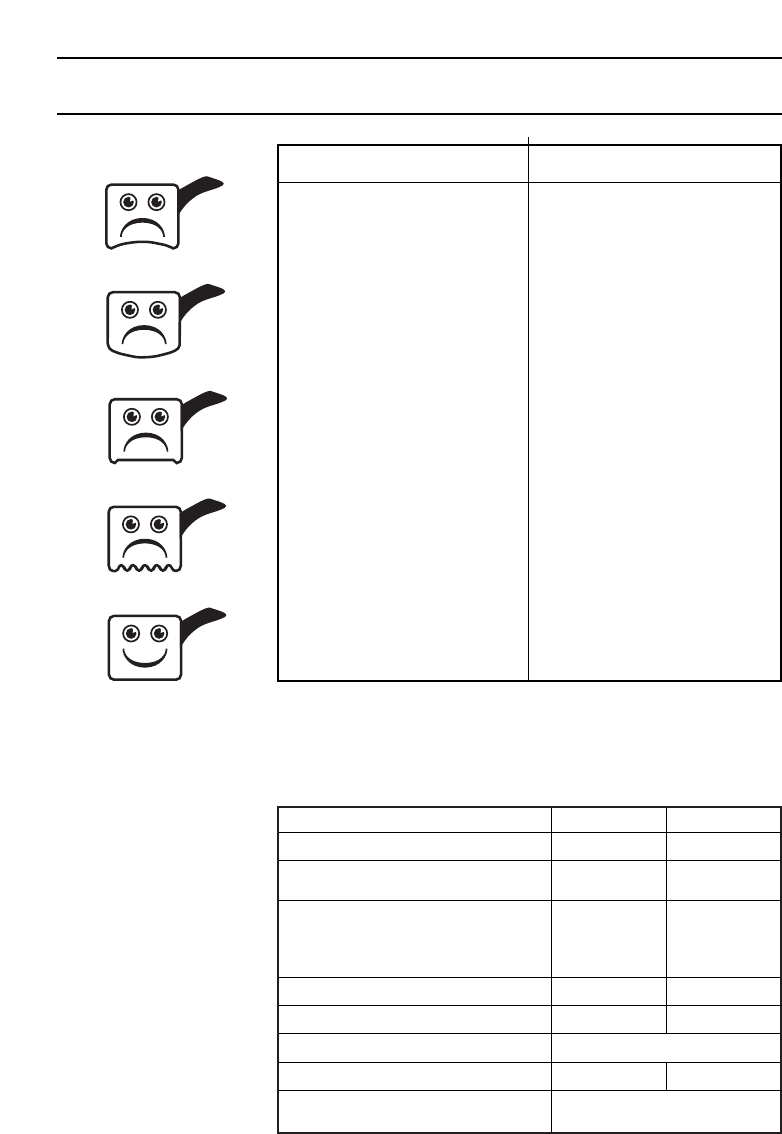
✓ With Extra Care ✓
27
PANS SHOULD BE:
Not concave (bowed in)
Not convex (bowed out)
Not rimmed
Not deeply ridged
But essentially Flat
THE BEST COMBINATIONS
This table is a general guide to the types of pan suitable for
different types of hobs and cookers. Remember pans should be
good quality, with smooth, flat bases. For any further information
refer to manufacturers’ instructions.
Always ✓ Never ✗
● Use good quality flat-
based cookware on all
electric heat sources.
● Always ensure pans have
clean, dry bases before
use.
● Ensure pans match size of
heating area.
● Remember good quality
pans retain heat well,so
generally only a low or
medium heat is necessary.
● Ensure pan handles are
positioned safely and
away from heat sources.
● Always lift pans,do not
drag.
● Always use pan lids
except when frying.
● Deal with spillage
immediately but with
care.
● NEVER Use gauze,metal
pan diffusers,asbestos
mats and stands e.g.Wok
stands – they can cause
overheating.
● NEVER Use utensils with
skirts or rims e.g.buckets
and some kettles.
● NEVER Use badly dented
or distorted pans.
● NEVER Leave an element
switched on when not
cooking.
● NEVER Cook food directly
on a heat source.
● NEVER Drag or slide
utensils,along the hob
surface.
● NEVER Stare at Halogen
heating units.
✓
✗
Stainless steel with single layer
copper base
✓
Stainless steel with sandwich bases
of aluminium and
stainless steel or aluminium
and copper.
Ceramic
✓✓
✗
Halogen
Aluminium
✓
✓
Enamelled steel
Enamelled aluminium
✗✗
Copper
Enamelled based cast iron
Not Recommended
Toughened glass or ceramic/
glass/pottery
✓✓
Ceramic Hob General Information
(C361E, C461E, C365E and R365E)
